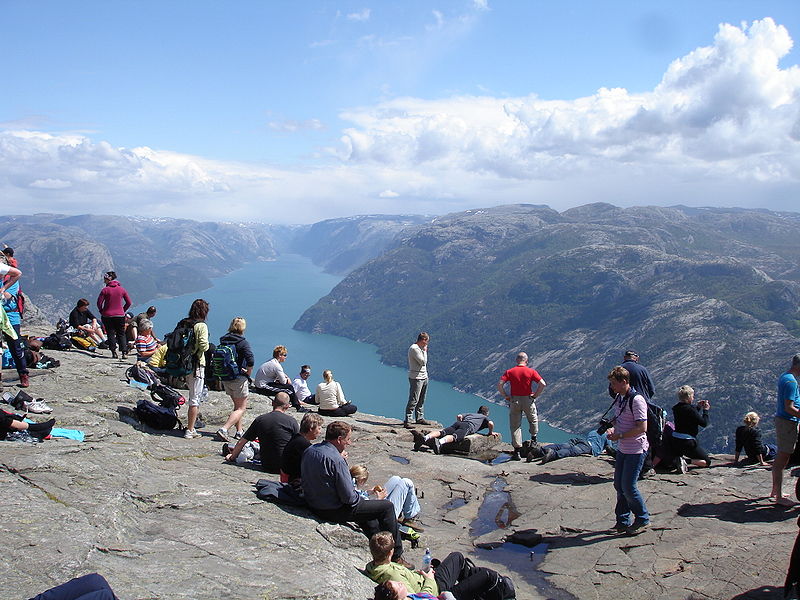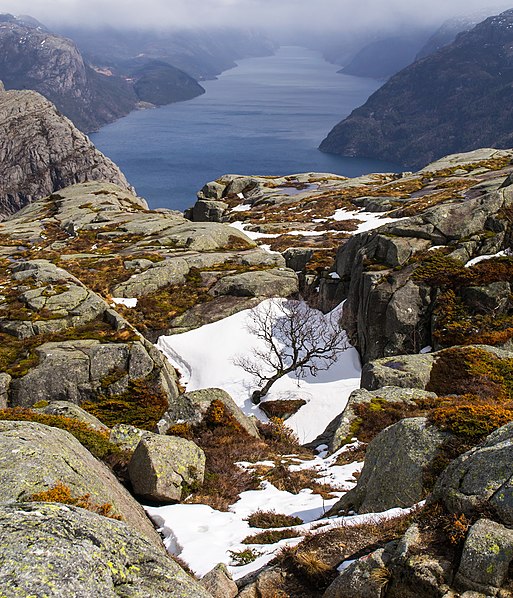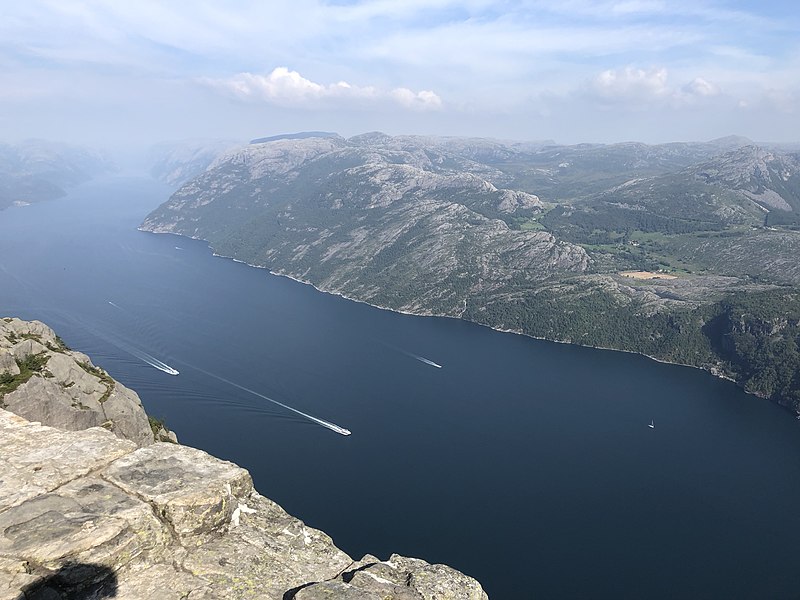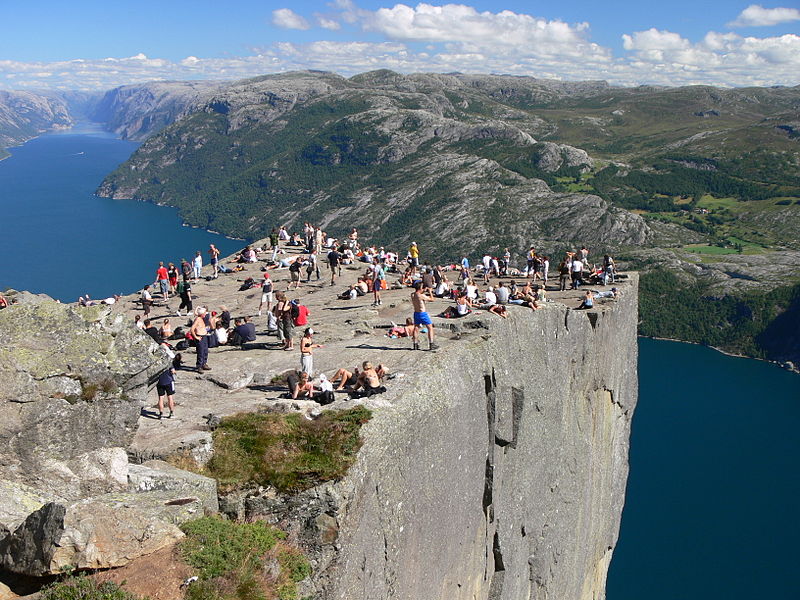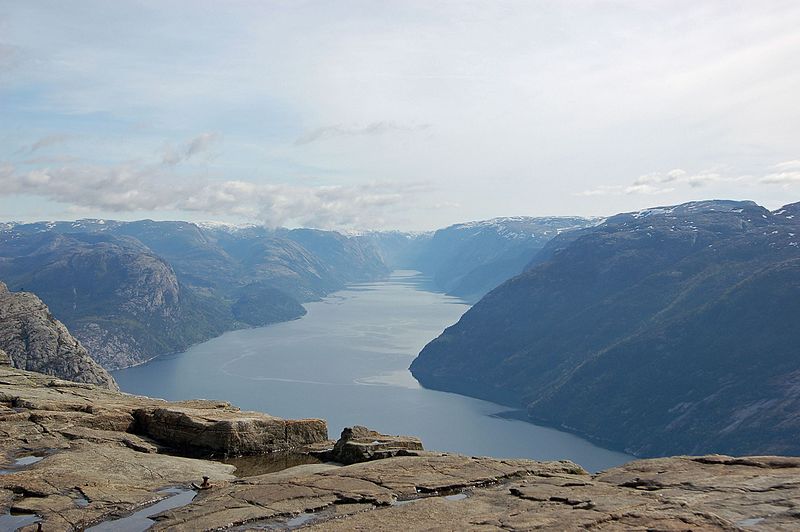Preikestolen
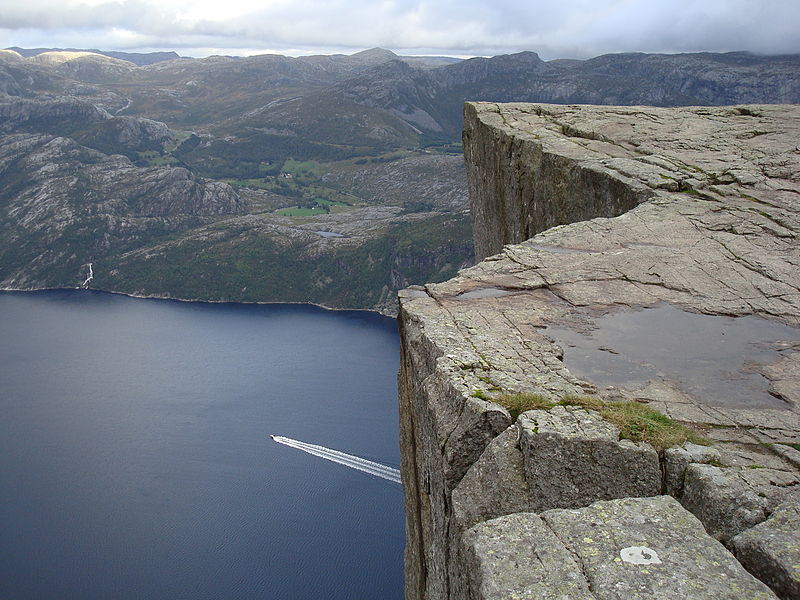
Facts and practical information
Preikestolen, also known as Pulpit Rock, is an iconic natural landmark in Norway, renowned for its breathtaking views and sheer cliffs. This massive flat-topped cliff, rising an impressive 604 meters above the Lysefjord, is one of Norway's most famous tourist attractions, drawing nature enthusiasts and hikers from around the globe.
The plateau of Preikestolen measures approximately 25 by 25 meters, providing ample space for visitors to take in the stunning panorama of the surrounding fjord and mountains. Despite its dizzying height, the site is a popular hiking destination due to the relatively accessible trail that leads to the top. The hike is about 4 kilometers each way and takes around 2 hours to ascend, with the reward being the unparalleled view and the thrill of standing atop one of nature's most spectacular creations.
Preikestolen's geological origins date back approximately 10,000 years when the edges of the glacier reached the cliff. The freeze-thaw cycle of the ice is thought to have caused the sharp and clean-cut appearance of the cliff face. Its dramatic drop and flat surface have made it a favorite spot for photography, and it has even caught the eye of filmmakers, featuring in blockbuster movies.
The cliff is a testament to the raw beauty of the Norwegian landscape and provides a nature experience that is both exhilarating and serene. As with any natural site, visitors are encouraged to respect the environment and prioritize safety, especially given the cliff's steep edges and the often unpredictable weather conditions.
Preikestolen – popular in the area (distance from the attraction)
Nearby attractions include: Lysefjord Bridge, Lysefjord, Jørpeland Church.


